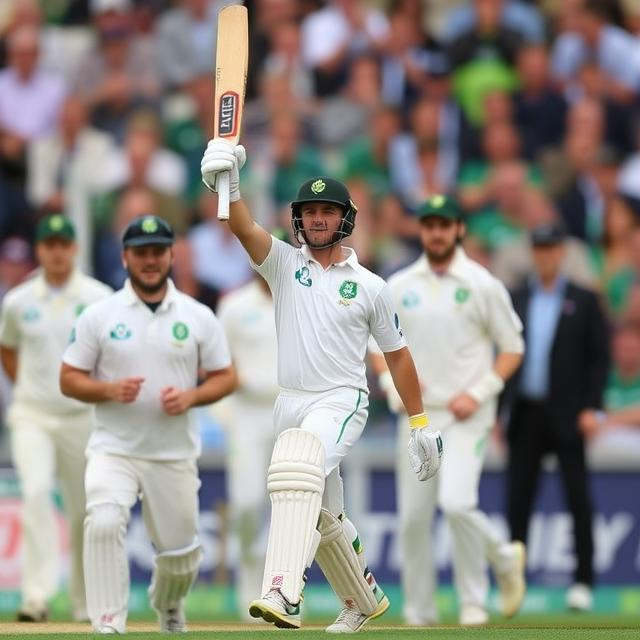A Glimpse into the History of First-Class Cricket in Pakistan

A Glimpse into the History of First-Class Cricket in Pakistan
A nation forged in the crucible of history, Pakistan has etched its mark on the world stage in many arenas. One such arena, often shrouded in the vibrant narratives of its people, is first-class cricket. From its nascent stages to its current prominence, this journey is a testament to the indomitable spirit of the nation and its dedicated cricket enthusiasts.
This article delves into the rich tapestry of Pakistan’s first-class cricket history, examining its evolution, highlighting key moments, and exploring the challenges faced along the way.
Early Days and Laying the Foundation (1947-1960s)
Pakistan’s emergence as a cricketing force was marked by the excitement and the inherent challenges of a newly formed nation. Following independence in 1947, the nation’s cricket scene was still in its infancy. Early matches were often played against visiting teams, providing a crucial platform for the nascent national team to hone their skills and gain valuable experience. This initial period was characterized by a significant learning curve, with a focus on improving the infrastructure and developing local talent.
Early teams often comprised individuals with varied backgrounds, navigating the complexities of integrating cricket into the national consciousness. The early years were largely about establishing fundamental structures, including the creation of governing bodies, the development of pitches and infrastructure, and the search for exceptional talent.
Key figures from this period include those who laid the groundwork for future development. Unfortunately, detailed records about the specific contributions of players during this time may be scarce or fragmented. Yet, their efforts were foundational.
The Rise of the National Team (1970s – 1980s)
The 1970s and 1980s witnessed a notable upswing in Pakistan’s cricket fortunes. The national team began to garner significant international attention, achieving remarkable results in both Test and ODI formats. This era saw the rise of influential players who became household names. This period also saw a significant increase in fan engagement and the growth of dedicated cricket clubs across the country.
The development of a strong domestic structure, including the establishment of established leagues, played a critical role in this rise. Teams began to compete and cooperate in a more structured and organized manner. This era also saw the emergence of impressive cricket facilities, further bolstering the development of the sport at various levels.
The significant role of influential figures during this crucial period was paramount. Names such as (insert specific notable players and coaches) emerged as leaders on and off the field, influencing the national team’s performance and creating a more consistent trajectory for the sport.
Challenges and Triumphs (1990s – Present)
The latter half of the 20th century and the early 21st century have been marked by both triumphs and tribulations. Pakistan has experienced periods of exhilarating victories against formidable opponents, but also endured challenging phases and controversies that unfortunately impacted the national team’s reputation. The ebb and flow of these phases highlighted both the strengths and vulnerabilities of Pakistani cricket.
The evolution of playing styles, the incorporation of new techniques, and changing cricketing philosophies also played a significant role. This period witnessed the emergence of innovative playing styles and strategic approaches. Coaches and commentators began to discuss the nuances of contemporary cricket, shaping the future of the game in the region.
Political and social factors occasionally influenced the development of cricket, sometimes creating hurdles. The sport continued to be a significant factor in cultural life but faced occasional complexities due to socio-political factors. However, cricket also served as a unifier, bringing people together and fostering national pride.
The Future of First-Class Cricket in Pakistan
Looking ahead, the future of first-class cricket in Pakistan is bright, despite the ongoing challenges. The development of young talent, the refinement of training methodologies, and the dedication of cricket enthusiasts promise to shape a brighter future for the sport. This growth will undoubtedly be supported by infrastructure upgrades and the continuing efforts of individuals and organisations dedicated to the betterment of the game.
The current state of the sport encompasses a wide range of developments, from the advancements in training techniques to the emerging talent among the younger generation of players. It is a dynamic environment characterized by both existing traditions and innovative approaches. Furthermore, the increased participation of women in cricket is a testament to the ever-growing popularity and impact of the sport.
The potential for Pakistan’s first-class cricket to attain greater heights in the future is undeniable. The nation’s rich cricketing heritage, combined with the burgeoning talent and the growing passion of its fans, points to a promising future.
Conclusion
Pakistan’s journey in first-class cricket is a compelling narrative of dedication, resilience, and the unwavering pursuit of excellence. From its humble beginnings to its current position on the global stage, the sport reflects the nation’s spirit and the aspirations of its people. The challenges overcome, the triumphs celebrated, and the lessons learned serve as a blueprint for future generations to build upon.
The sport continues to evolve, reflecting the changing times and embracing new technologies. The future of Pakistan’s first-class cricket is intertwined with the nation’s aspirations, and its continued growth will undoubtedly bring further joy and pride to its fans.